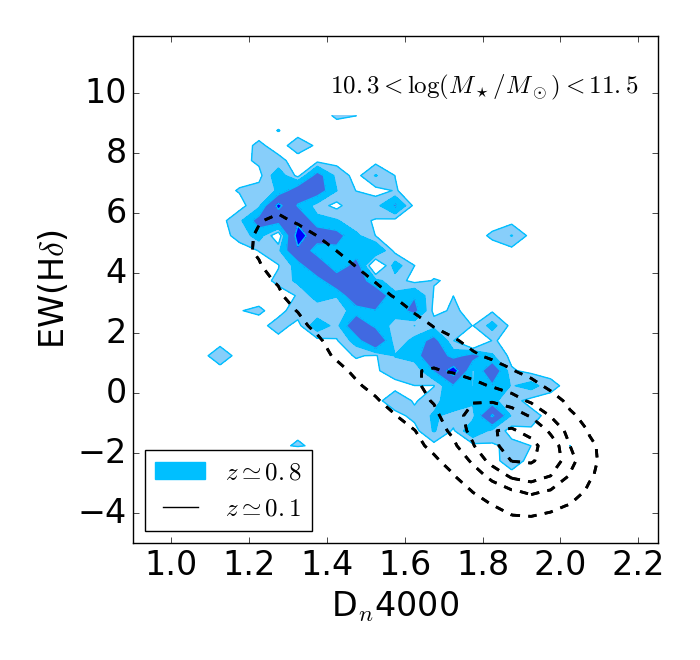LEGA-C Survey
The physics of galaxies at a lookback time of 7 billion years
The Survey
The Large Early Galaxy Census (LEGA-C) is a Public Spectroscopic Survey of ~3000 K-band selected galaxies at redshifts z = 0.6 − 1.0 with stellar masses log(M) > 10, conducted with VIMOS on ESO’s Very Large Telescope. Each galaxy receives 20-hour long integration time in order to acheive a signal-to-noise ratio comparable to SDSS spectra in the nearby Universe.
These deep, high-resolution slit spectra provide very detailed data of stellar continua for galaxies ~7 Gyrs ago and are able to characterize fundamental properties of stellar populations: stellar ages, metallicities, stellar velocity dispersion, dynamical masses, as well as stellar rotation. These are keys for the study of galaxy evolution, but so far only available for representative galaxy samples in the nearby universe, at lookback time approximately 1 Gyr.
The sample size and quality of LEGA-C spectra enable for the first time several studies of keys questions in galaxy evolution on long cosmological time scales, especially for early-type galaxies: mass assembly, dynamical evolution, and the quenching mechanisms.

Star-formation history, metal, and dust beyond the local Universe
With excellent spectra, we are able to constrain the physical properties of galaxy population at early Universe much better than before. Now we can make proper comparison between galaxy population in the local Universe and at 7 Gyrs ago.